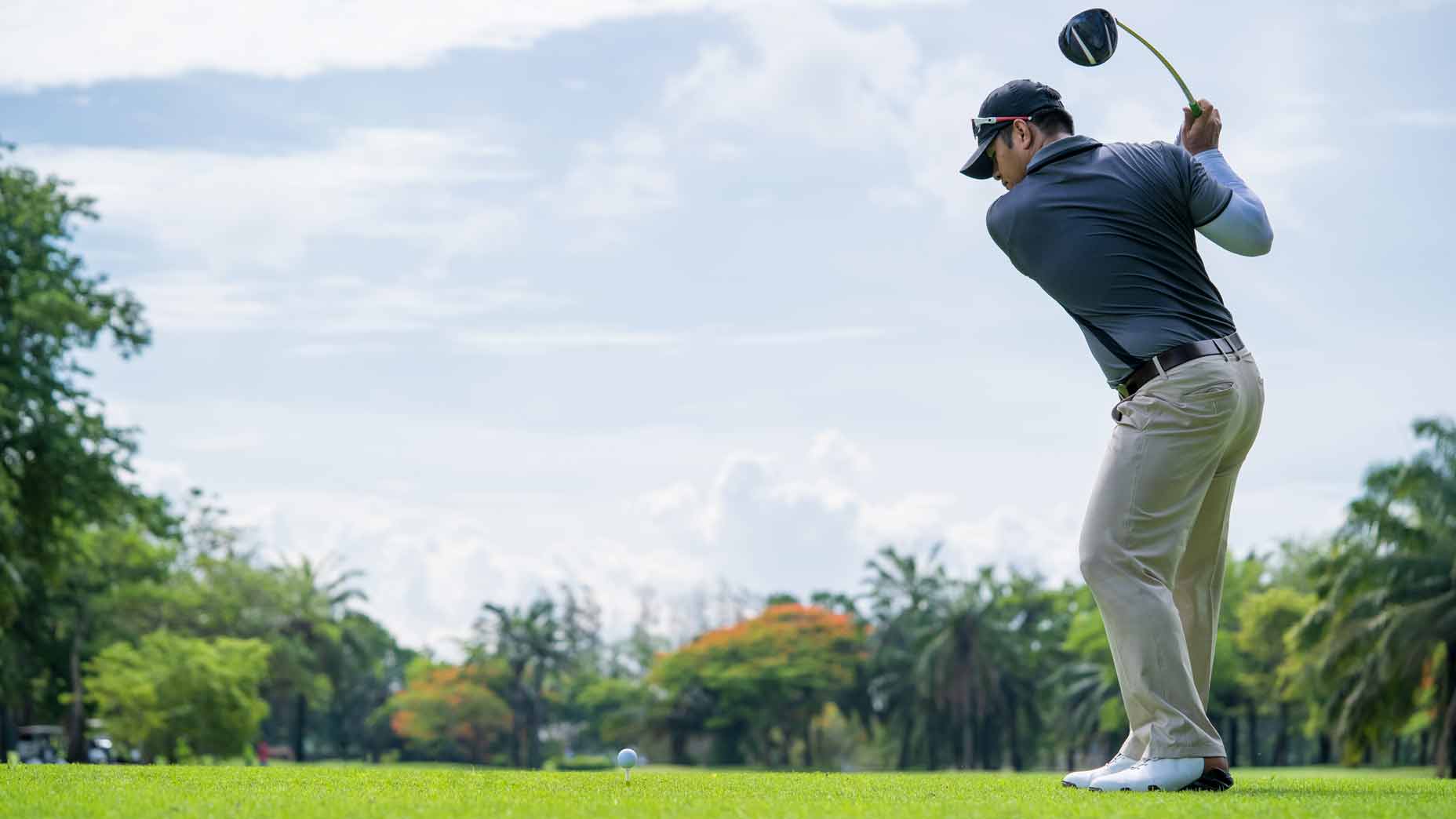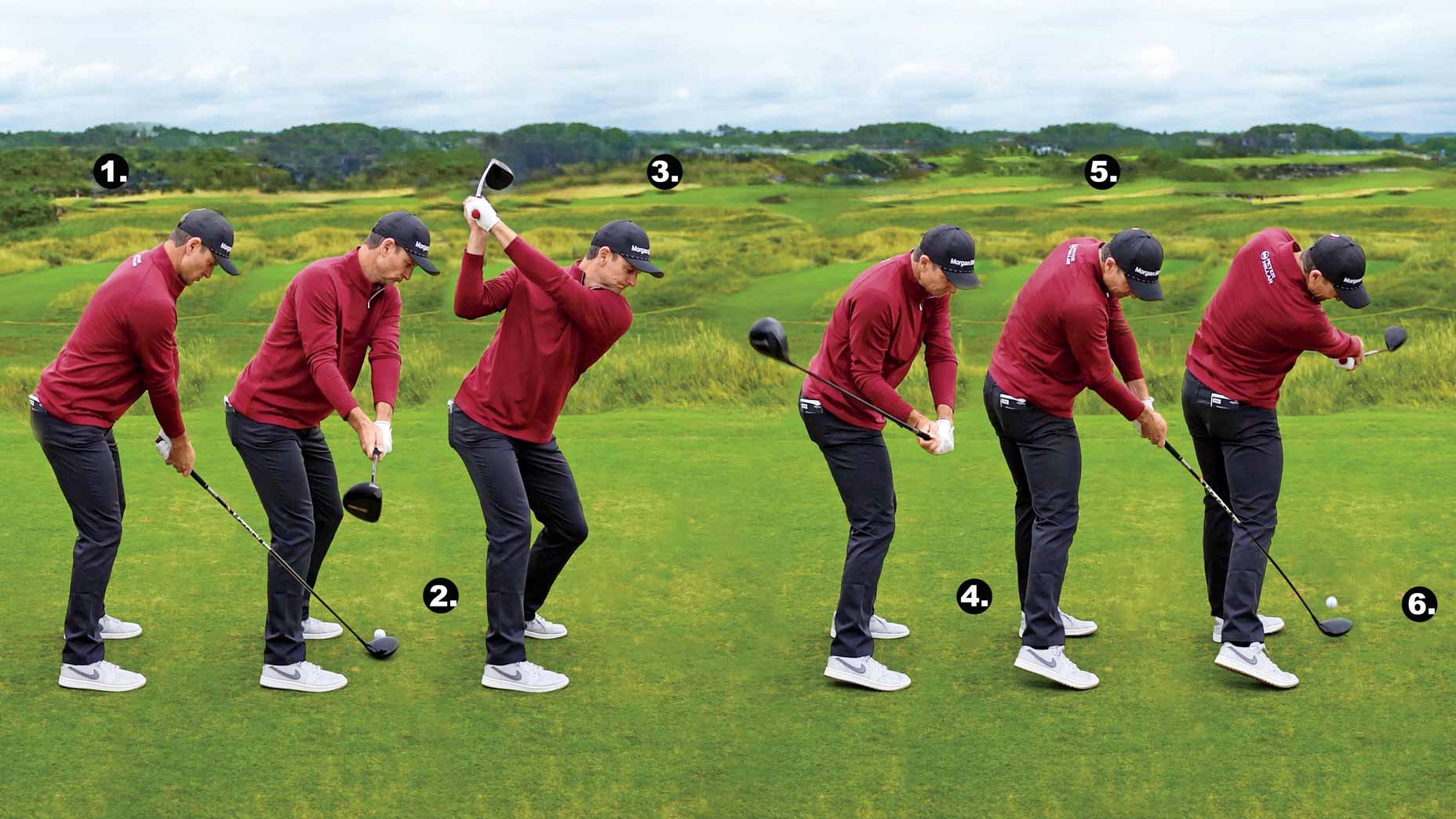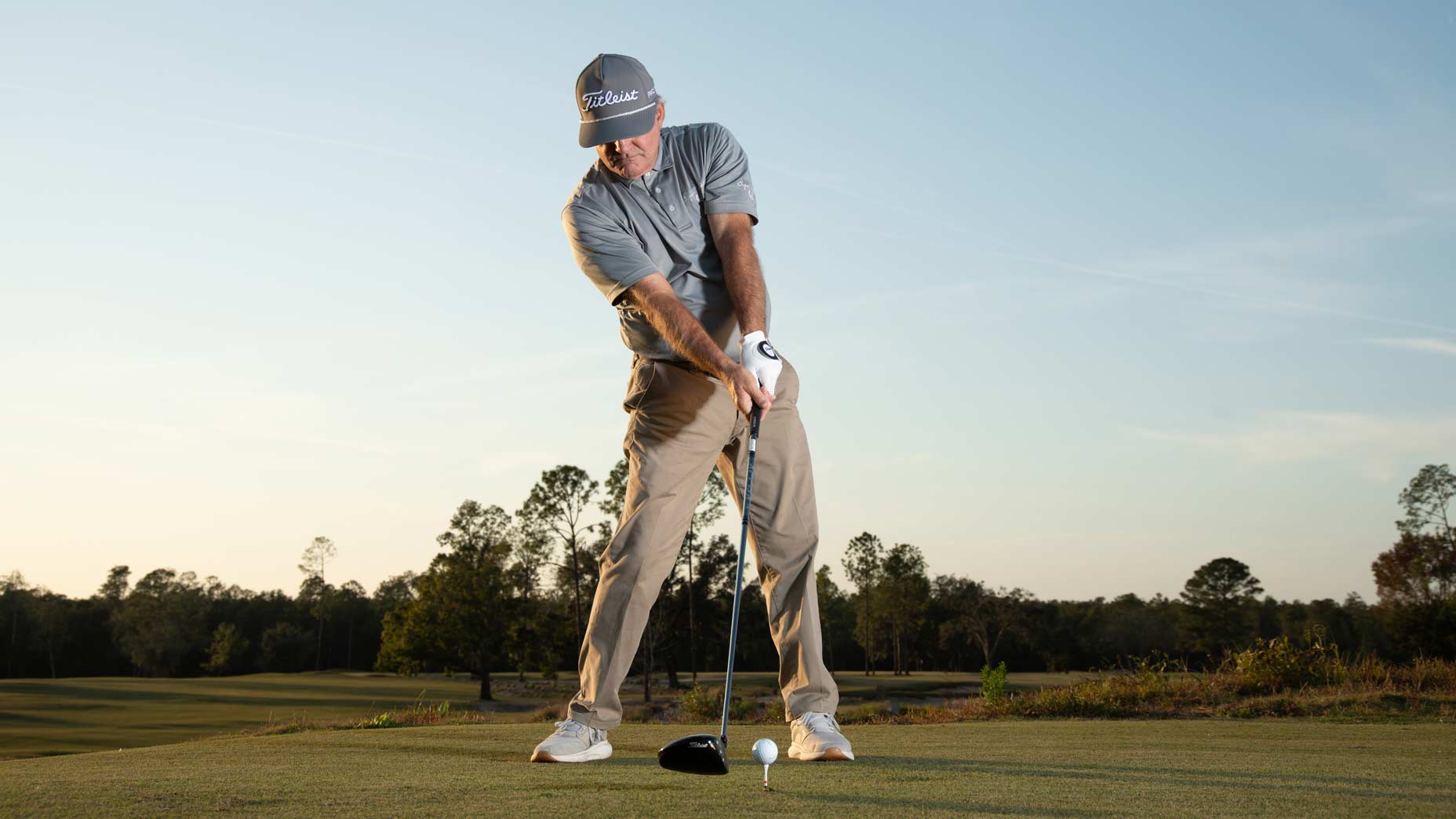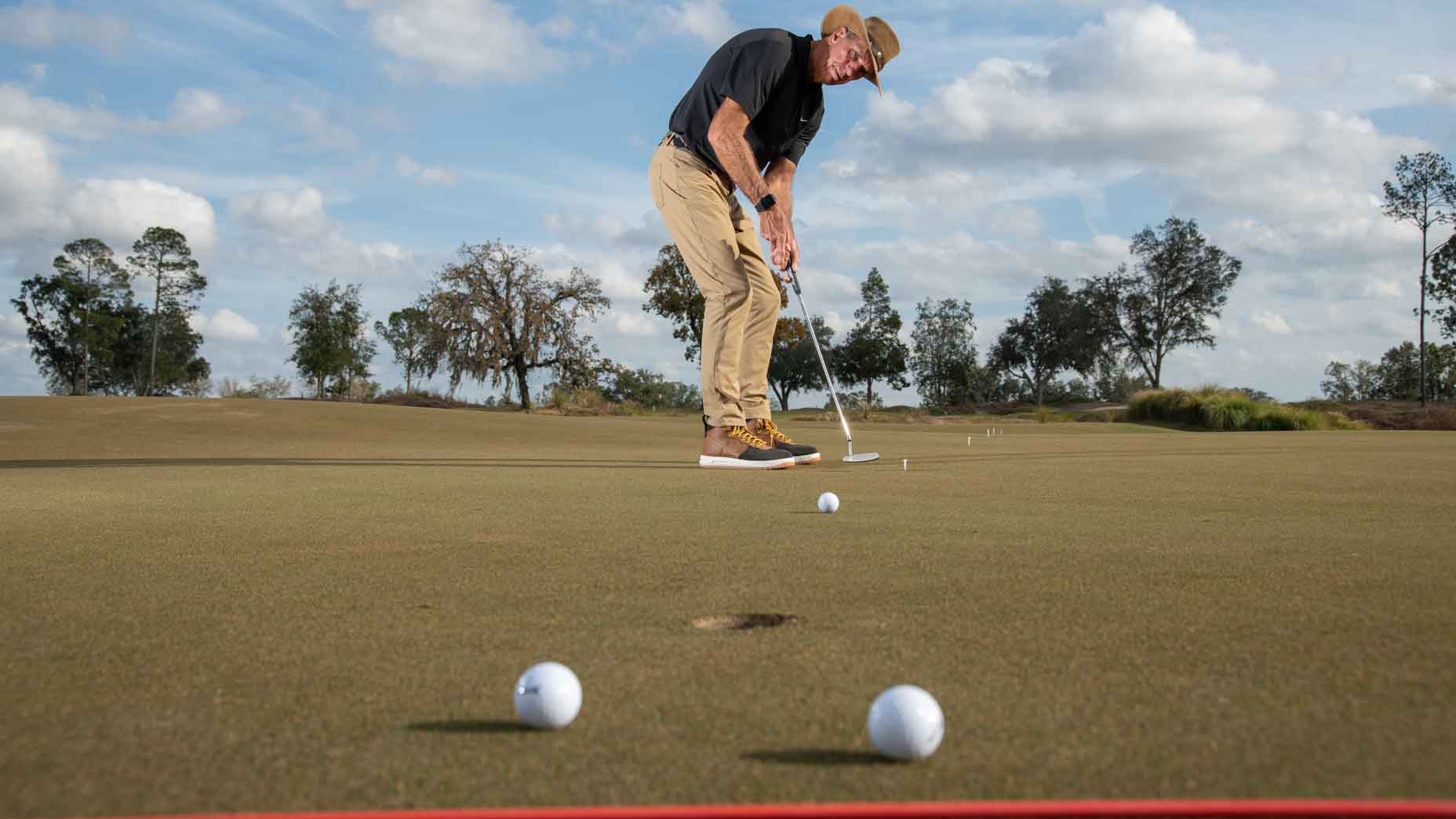Early extension is a swing-killer that is tough to diagnose for the average Joe. While lots of weekend warriors are able to see when their path is off line or their clubface isn’t square, they have a much harder time catching things like early extension.
For those unfamiliar with the term, early extension refers to excess pelvis movement toward the ball during the downswing. And while it may not seem like such a terrible thing, it can cause tons of consistency issues in the swing.
When a golfer is suffering from early extension, it makes it very difficult for the club to stay on plane. Whith the hips crowding the ball it makes it difficult for your arms to have room during the downswing. This means you’ll either get too steep or your arms will get stuck behind you, introducing the dreaded two-way miss.
If you want to keep your swing on plane, you need to create space for them as you are in the downswing. And for more help with that, we turn to GOLF Top 100 Teacher Dave Phillips.
Teaching a golfer how to push against the ground more effectively can help them avoid early extension and create space with their lower body.
— TPI (@MyTPI) August 9, 2024
One of our favorite strategies is our Hip 45 drill, demonstrated by Dave Phillips. pic.twitter.com/HLMIVomSyI
Cure your early extension
When you thrust your pelvis toward the ball, it forces your arms to take an alternate route during the downswing. If you watch pro golfers, you’ll see them maintain their posture throughout the swing, creating space for the arms to swing freely as they approach the ball.
To replicate this move, you need to focus on how you are transferring your weight during the downswing.
As Phillips demonstrates in the video above, grab an alignment stick and put it on the ground between your feet at a 45 degree angle. Put one end in front of your trail toe and the other behind your lead heel and then get in your golf posture.
“I want you to practice going to the top of your backswing,” Phillips says. “And now in transition, before the club even gets to the top of the backswing, your lower body is going to shift pressure into your lead toe. The minute you feel that, I want you to feel like you’re going to push your belt buckle back at a 45-degree angle along this line.”
By shifting your weight and pressure in this way, you’ll keep your trail hip back and out of the way allowing your arms to drop down into the slot and keep the shaft on plane.
“If you do this properly and you create the space, you’ll find that your arms are in front of you,” Phillips says. “This is a great way to create a solid strike on the golf ball.”











